Before I discuss the design and flow of the workshop conducted I would like to share that this workshop was conducted by the Riad Foundation in collaboration with Ritinjali, a Delhi based NGO. The workshop was conducted for a group of 18 children of the emergent reader category. These children live in the slums of Delhi and Ritinjali runs a learning centre within a slum where the workshop took place.
The book chosen was a Hindi concept book on colours, a Room to Read publication titled, ‘Rang’. It is a story about a white bear who loves colours. One day when the bear steps out of the house a series of events occur in which different parts of his body adorn a different colour. He is elated and starts dancing around until he trips, falls into a container of milk and turns white again.
The workshop
Duration: 2hrs 30mins
Number of Children: 18
Section 1
Part (a) – When We Speak
Split the large group into two groups of children with one facilitator each. Each facilitator in their respective group introduces themselves and shares a recent experience. Then the children follow the same format.
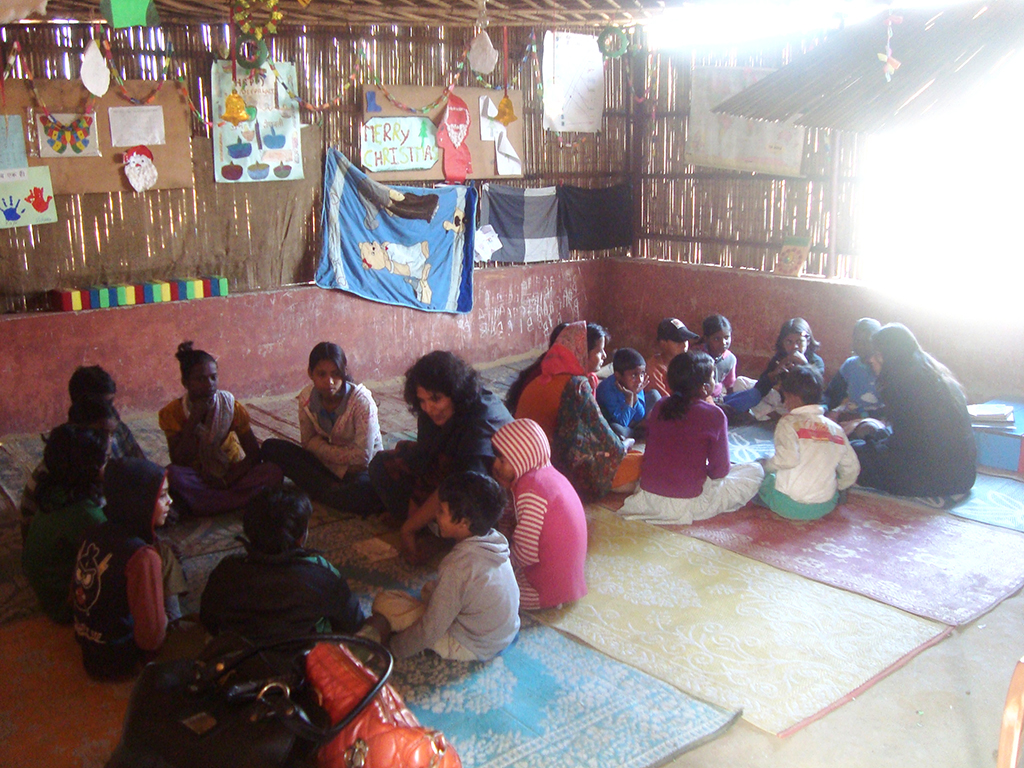
The children get back to a large group where we discuss with them how we only know the names and experiences of members of the group one was part of. Why is that the case?
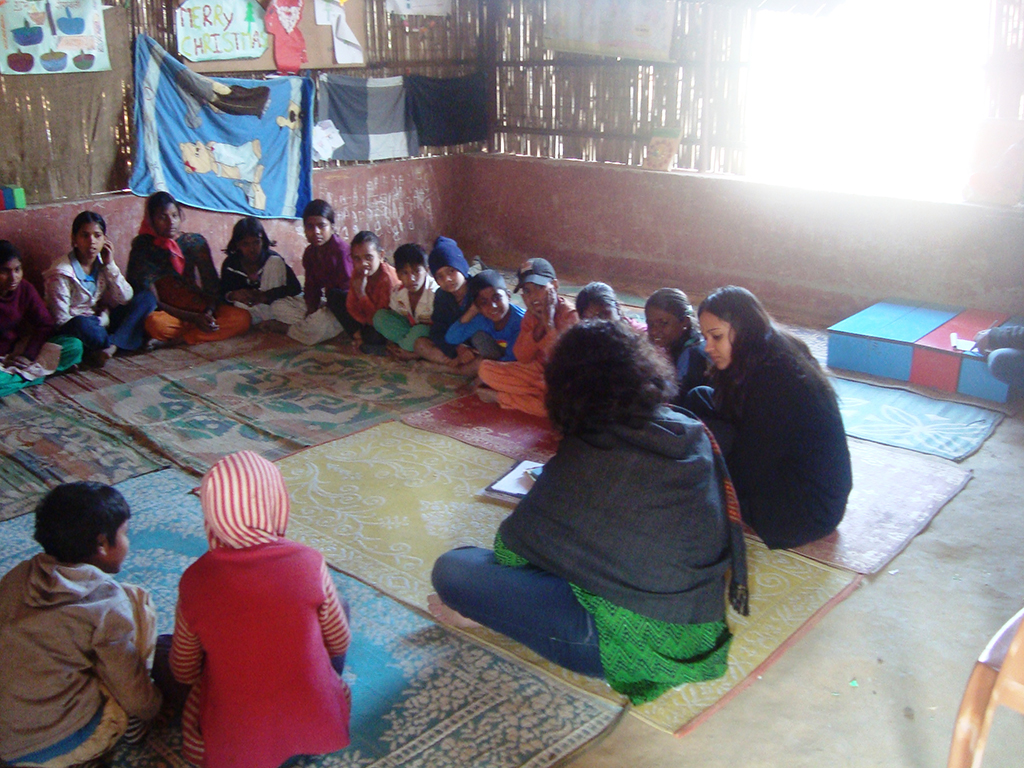
Part (b) – When we write
Continuing the discussion the facilitators emphasize the extent of reach of the spoken word versus the written word. If only all the names and experiences of each member were written down all members would have known what was shared, which points to two aspects. One, the written word can reach to a much larger audience that spreads across space, time, culture and age groups and two, since the written word is a documented or recorded version of someone’s memory it cannot be lost.
Through Parts (a) and (b) the foundation of why the written word has value will be laid.
Part (c) – Concepts of Print
To showcase different kinds of story books to the children and discuss their format in terms of the cover page, contents of the cover page – illustration, title, author, illustrator, etc. To probe children to think about why there is a cover page and what is its importance. To also show that some books have spines, the content on the spines and to also discuss the title page.
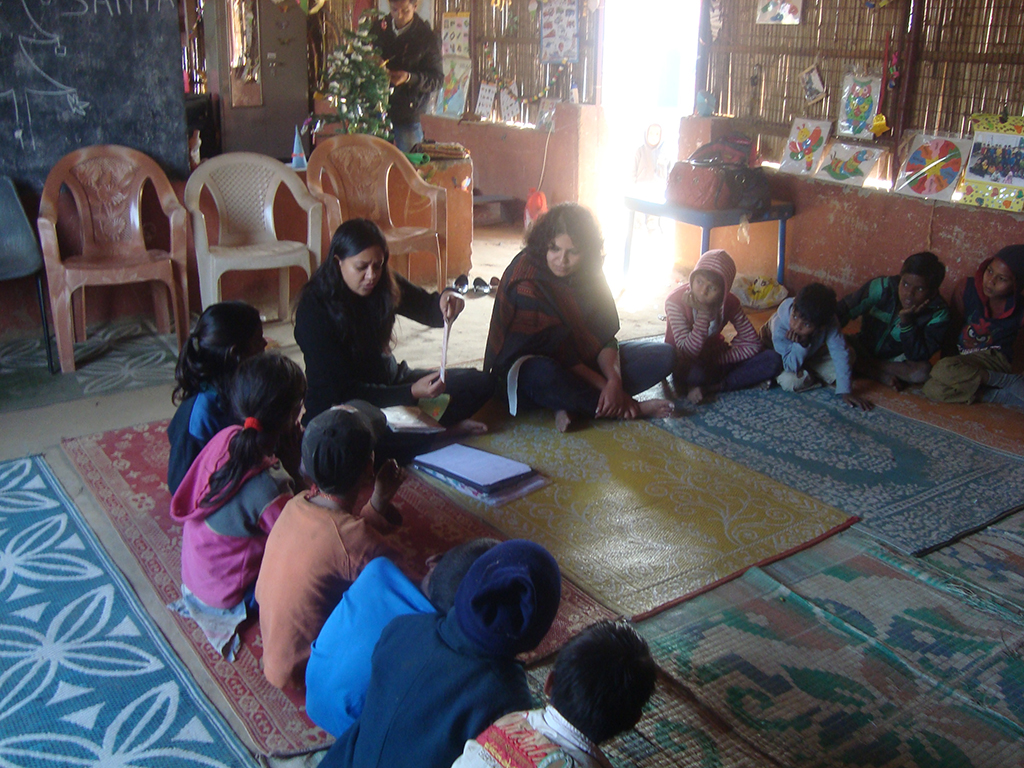
Now the storybook identified for this workshop (‘Rang’) will be presented. To show the cover page of the book and ask children what all they see on the cover page, what could the book be about, who all could be in the story, why is it that the colour of the bear is white but the name of the book is colours, etc.
Section 2
Part (a) – Emotive Reading
One facilitator to do a read aloud session and ensure to bring out the emotions of the character and events while reading out. One needs to bring out all the senses into words. For example if the character is happy then the facilitator demonstrates it in his/her expression and voice.
Part (b) – Activity
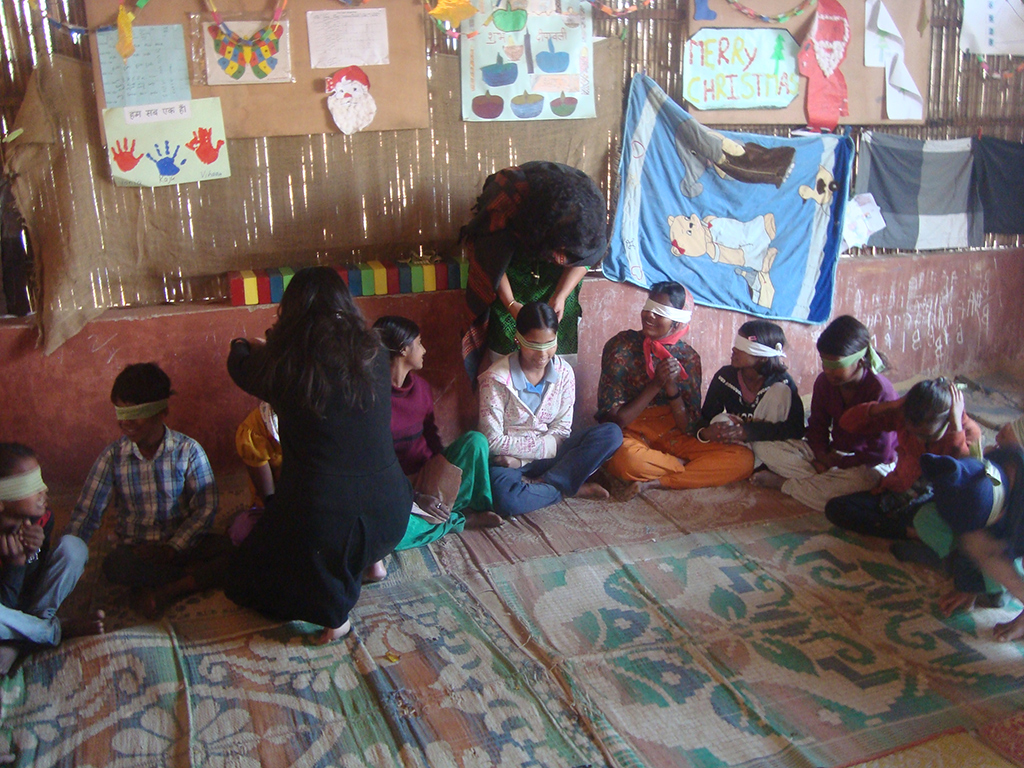
Blindfold the children and on presenting (make them touch, feel, taste or smell) them a material (all materials chosen are what appear in this book and can be referred to in the list of material for the workshop) ask them to:
- Identify the material
- Express what they feel in word/s when sensing the material
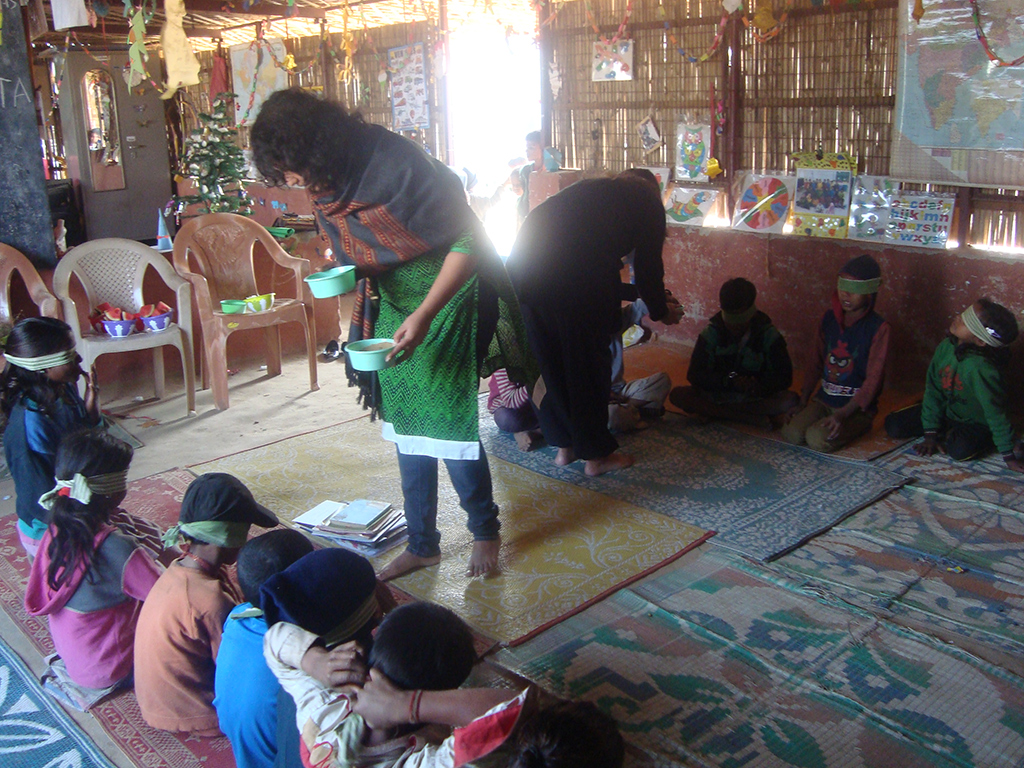
All the words the children give should be recorded on a board for all to see.
After removing the blindfolds ask the children how they felt. Were they able to immediately identify the material, did it take time, what were the challenges, etc? Discuss with them the importance of bringing all our senses into the story other than the visual and auditory (if story is read aloud) sense. Also, try to emphasize that to achieve the same we need to keep the imagination running because what is there in the story cannot always be brought to life in real time but one can always imagine it to experience it.
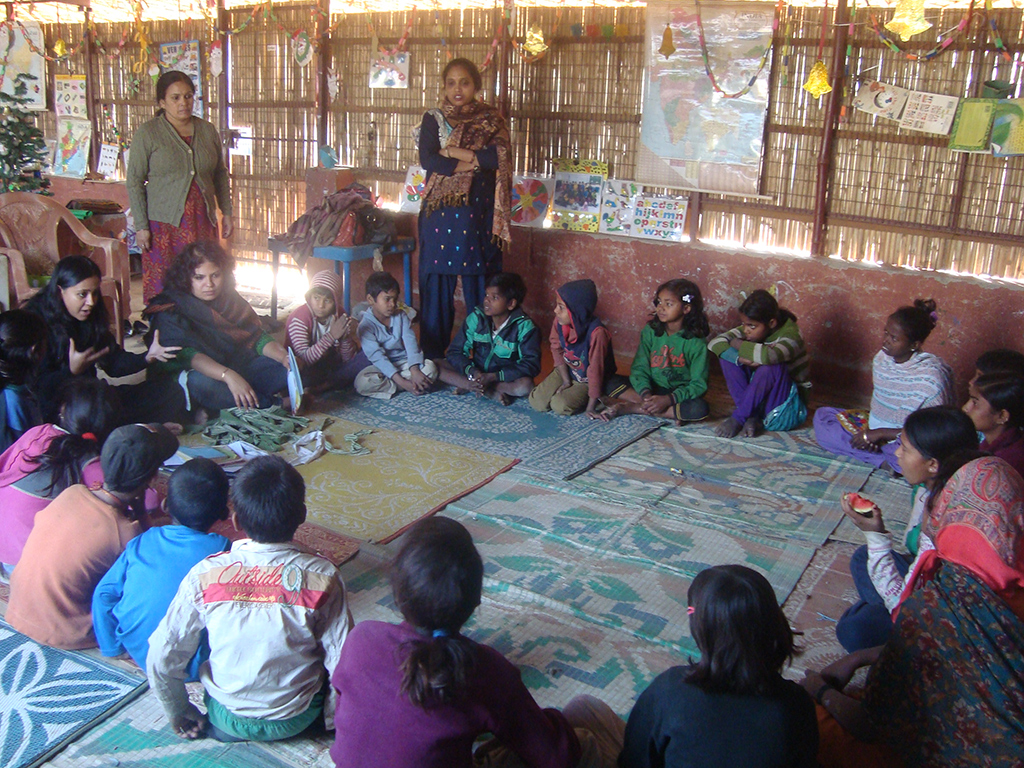
Part (c) – Sensory Reading
Now that the children have identified the different materials presented to them and have given words of expression for each material, one facilitator again does a read aloud and this time adds words from the board when a particular material comes up during the story. With the added word the facilitator needs to ensure to continue to instill emotions in her voice and actions.
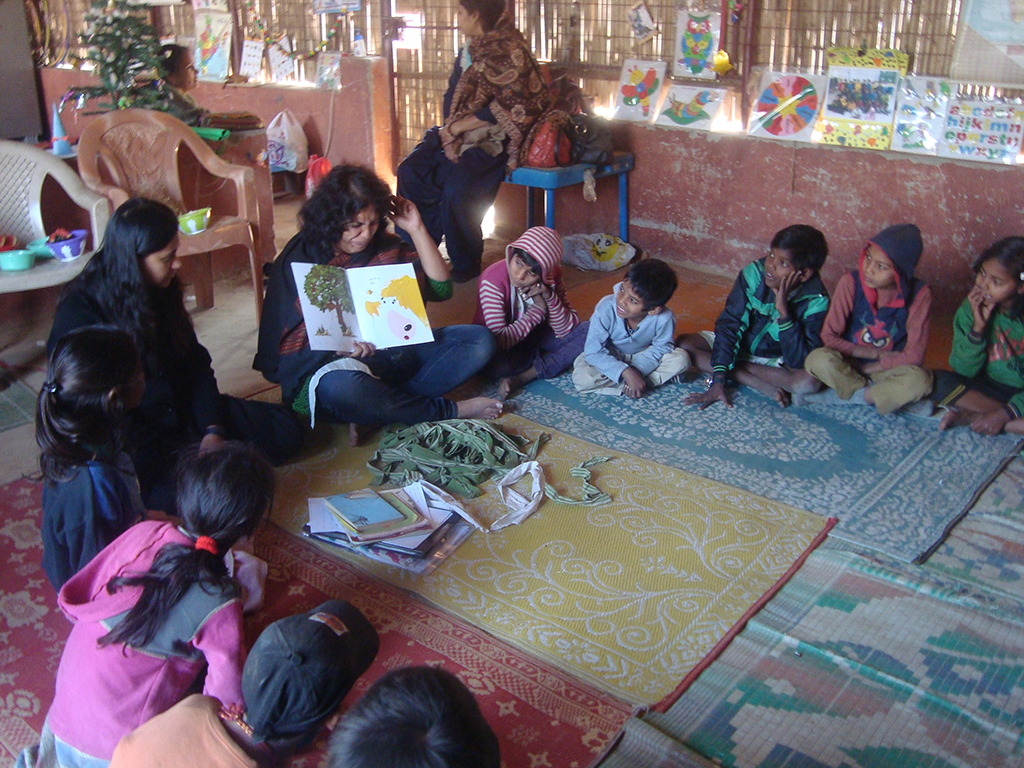
This process of sensory and emotive reading will facilitate the children to start feeling what the character is feeling and become part of the story.
Section 3
Final Activity
The children will be presented all the material in front of them and they will need to choose one material they like. Once they choose their material (and here one can add more material other than the materials that appear in the book) the children will be asked to think of a story imagining if they were the material they have chosen.
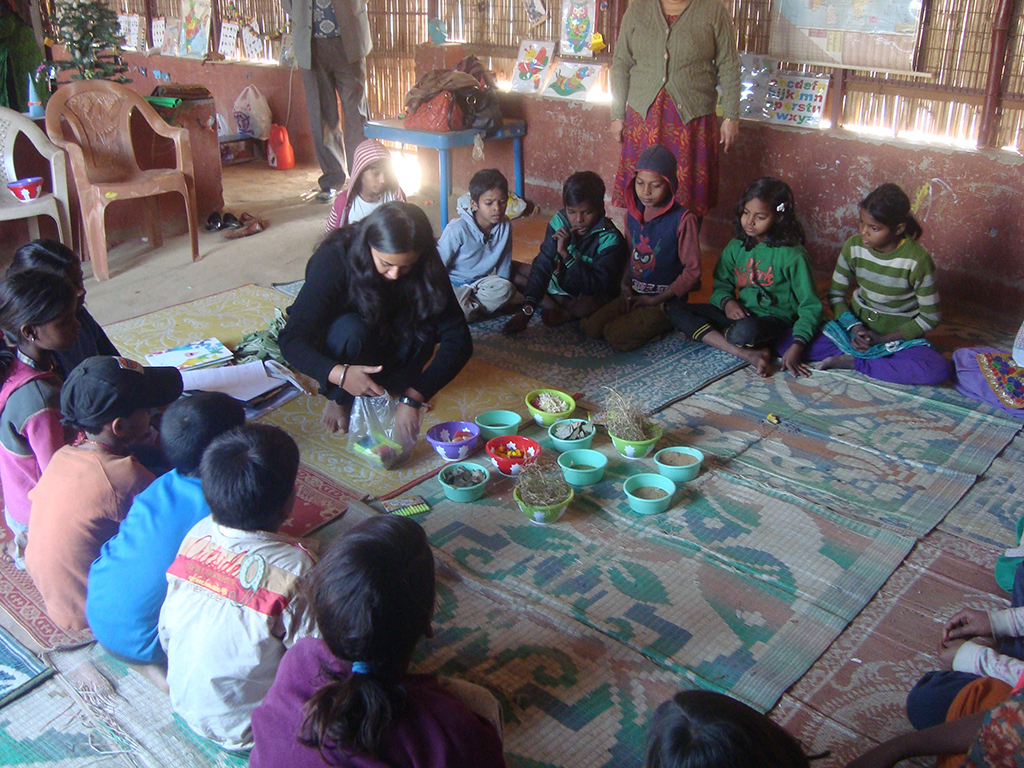
Once children have thought of their story they will be given blank booklets (containing four spreads) in which they will illustrate (because they are only emergent readers at this stage and cannot fluently read or write) their stories.
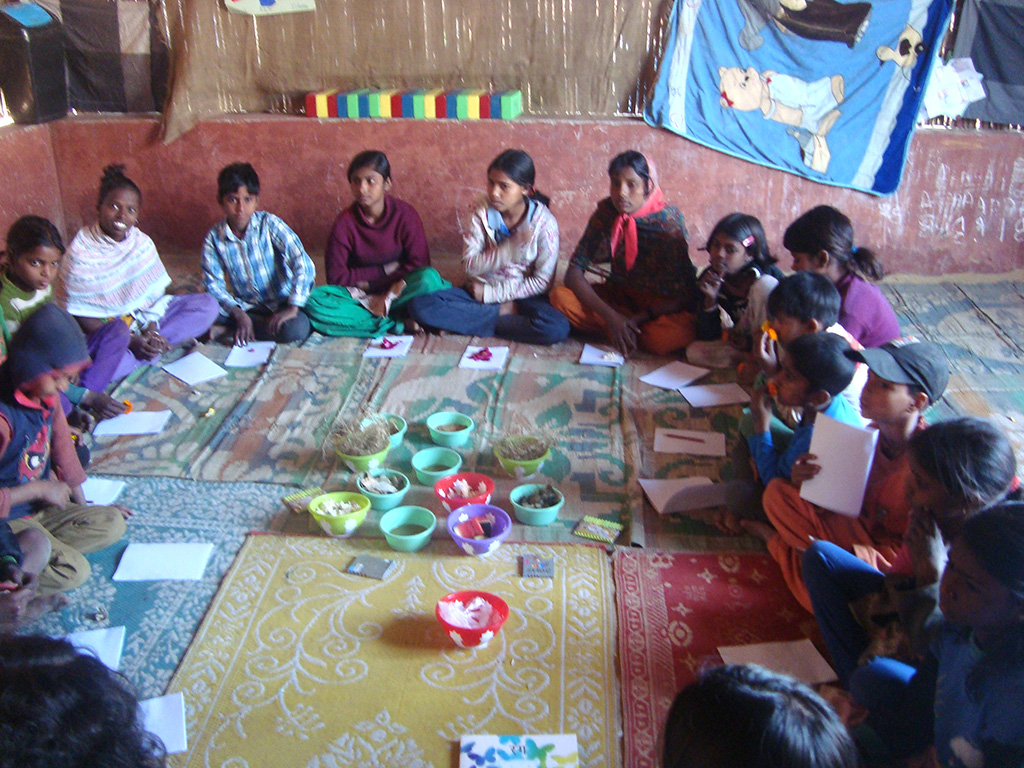
Once they complete their illustrations they will be asked to complete the book in terms of the format for which they will have to include a cover page – illustration, author’s and illustrator’s name. On completion the children will come one by one to the facilitators and narrate their stories individually. The facilitators can write their narrations against the illustrations to complete the story which they can take back with them. During this process the facilitator can ask different questions like why did the flower feel sad or lonely, can there be a way to make the watermelon feel better, etc.
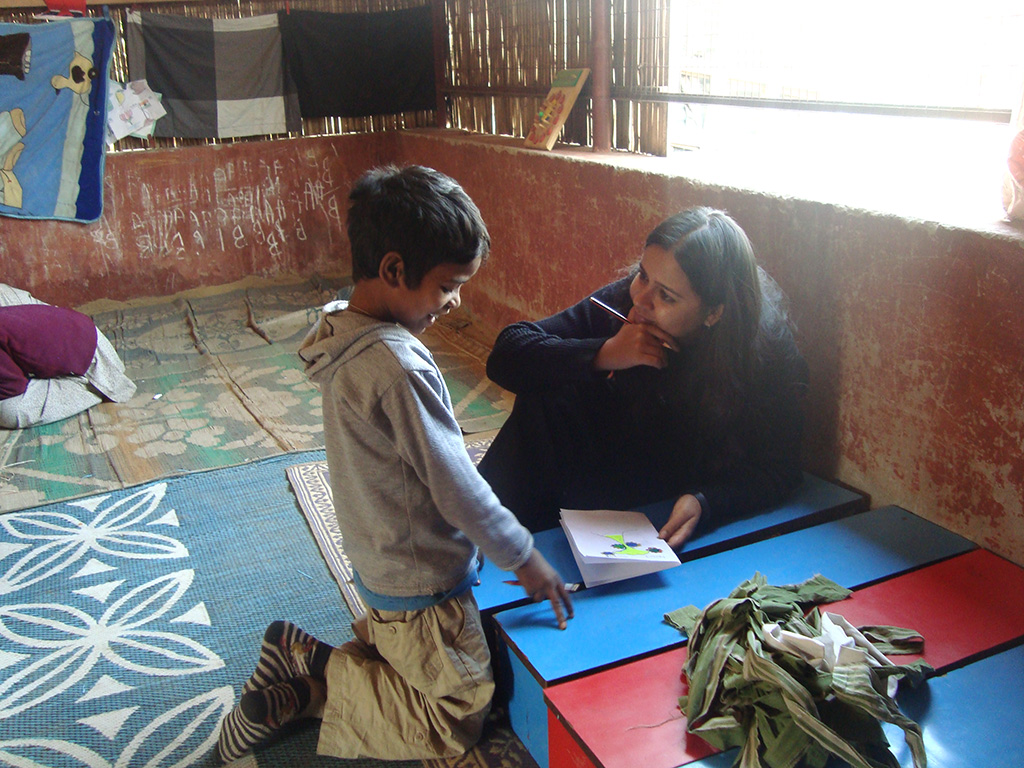
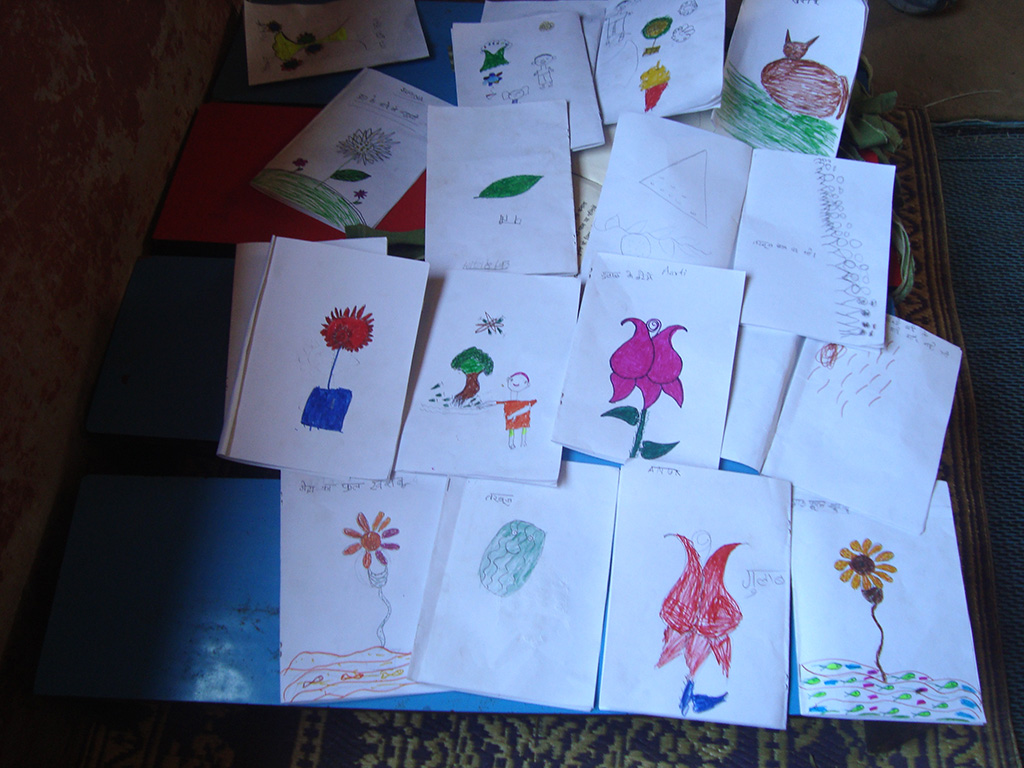
Conclusion
Ask children who would like to volunteer to read out their own books. Conclude with a discussion that now they have a book they can read even when they are older, they can share it across geographical spaces and a lot more. Basically their story has been recorded forever. Similarly to ask them to start picking up other people’s recordings (storybooks) and to try to read starting from decoding the illustrations the way they did for their own books.
Materials Required:
- Petals/Flowers
- Honey
- Mud
- Grass
- Watermelon
- Paint
- Blindfold/dupattas
- Board/chalk
- 2 A4 sheets stapled at centre to make blank booklets
- Crayons/pencil colours/sketch pens
- Paint brushes, tumblers for water, mixing plates, water
- Leaves and twigs
- Few children’s storybooks other than the chosen storybook
We hope this piece will be helpful to start your storytelling sessions with children. In case you have any questions, clarifications and also inputs please feel free to write into: riadfoundation@gmail.com. We would be happy to hear from you.
